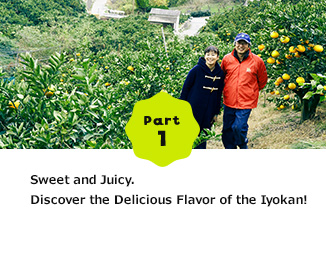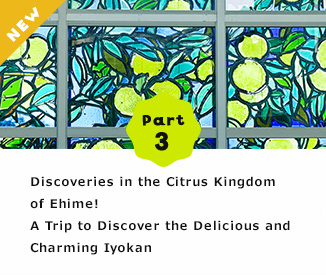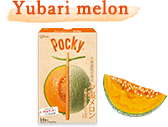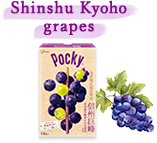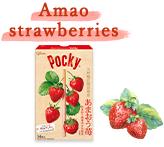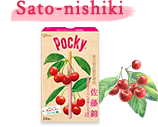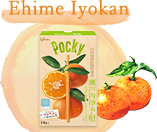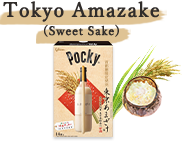The representative citrus fruit of Ehime
with a perfect balance of sweet and sour.
The Iyokan is well-known as the representative fruit of Ehime Prefecture, and approximately 90% of domestic production takes place there. A refreshingly sweet and sour fragrance bursts forth from the freshly-peeled thick skin. The large and juicy chunks of fruit contain loads of sweet and sour juice! In Part 1, we will take a look at the origins of the juicy and vitamin-filled Iyokan and what makes the fruit so delicious.
One Farmer’s Discovery of a “Single Miracle Branch.†The Miyauchi Iyokan: Discovered by happenstance.
Many of the Iyokan fruit currently being produced are a variety known as the “Miyauchi Iyokan,†with nearly 90% of the fruit being this variety. The history of the Miyauchi Iyokan begins in 1955. The variety came to be when Yoshimasa Miyauchi, a farmer raising citrus fruit in Hiratamachi, Matsuyama, noticed a mutation in his crop and decided to raise that branch separately. He would later find that, compared to existing Iyokan varieties, this variety was slightly larger and had a softer and sweeter flesh. What’s more, this variety led to an abundant harvest which ripened quickly, establishing it as a highly appealing variety for farmers! When we consider that development of a new variety usually requires a long period of 15 years or more, this unexpected discovery can almost certainly be thought of as a “miracle.â€

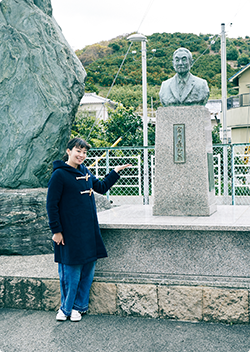
2015 Marked the Variety’s 60th Anniversary, and Production Grows All the More Prosperous.
In 1966, with the variety’s official seedling registration under the name “Miyauchi Iyokan,†its reputation for being an easily-grown, quality fruit led to a sudden enlargement of its growing area. The Miyauchi Iyokan has now grown to be a well-loved citrus fruit all over the country as a specialty product of the Matsuyama area. The variety saw its 60th anniversary come in 2015, and it is said that a number of events to celebrate the fruit’s 60th birthday were held as well at the time.
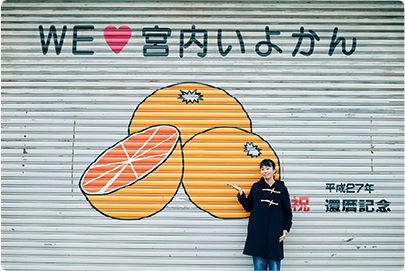
Great Fragrance. Great Flavor. Even Great When Processed!
Interviewing the staff of JA Ehime Chuo about the good points of the Iyokan fruit led to a number of comments showing their love for the fruit, such as “They’re so juicy that the juice even drips from the membranes!†and “The large, tender flesh makes for a great texture when you bite into them.†While the fruit is great when eaten as-is, they say that processed products, such as juice and jelly, are recently quite popular as well. What’s more, the thick and slightly bitter outer skin are said to be great when dried and turned into an Iyokan peel snack. The brightly-colored, highly fragrant, and delicious Miyauchi Iyokan is a great all-purpose fruit which you won’t want to waste even the tiniest piece of!
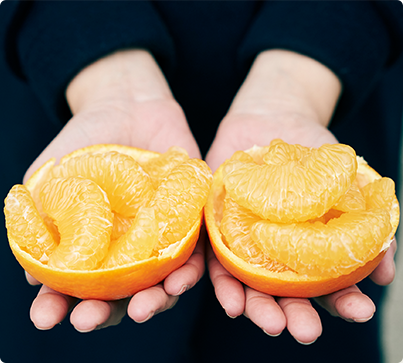
Next, we visited Ichiro Miyauchi - a man who has been running a citrus plantation for many years in the birthplace of the Miyauchi Iyokan, Hirata. The time of our visit in December was the very peak of harvest season! We asked him about his thoughts on Iyokan farming while gazing out at the branches heavily laden with ripe, orange-colored fruit.
A Challenge-Loving Farmer Who Even Works to Cultivate New Varieties.
Mr. Miyauchi followed his late father’s path and entered the world of citrus farming. “I studied engineering, so I didn’t know anything at all about farming. I gathered the necessary know-how and skills slowly but surely through hands-on experience,†he comments. After becoming a producer of the fruit himself, he has also begun actively working hard to implement new cultivation techniques, such as his prompt installation of sprinklers in the orchard. The number of citrus varieties he cultivates has grown steadily over the past 10 years, and he now has around 3 hectares of cultivated land growing 11 total varieties of citrus, including the “Miyauchi Iyokan,†“Beni Madonna,†“Kanpei,†and “Kara Mandarin†varieties.

With an Ample Amount of Time and Effort: Affectionately Cultivated Iyokans Have a Truly Amazing Flavor.
We first noticed that the steep slant of the ground in the fields was quite surprising! “Land on the ocean side with plenty of sunlight and slopes making for good drainage is the best for citrus production,†explains Mr. Miyauchi. The fact that the growth and flavors of the fruit can change slightly depending on climate, even with perfect land conditions, is one of the difficult points of working with nature. “Not being able to predict how the fruit will turn out is a difficult point, but it is also very interesting. I get to feel like a newcomer to cultivation every year.â€

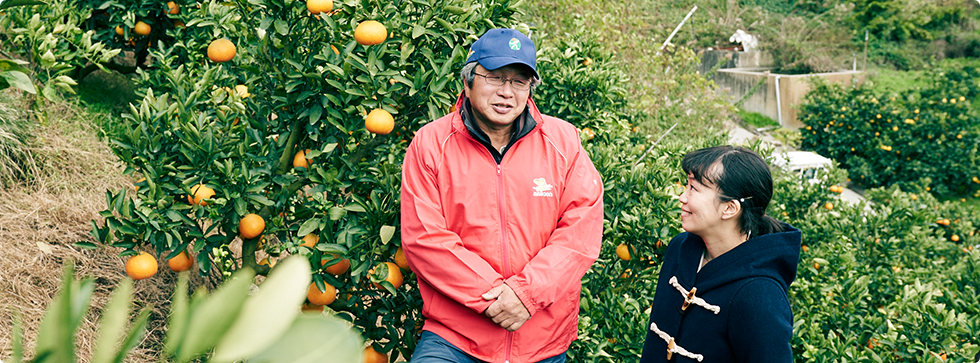
Finally, when we asked what the best part of Iyokan cultivation was for him, he smiled and replied, “I’d have to say it’s the feeling I get when I get the harvest safely sent off to market.†It is truly a difficult task to continually produce high quality Iyokan fruit in an environment which changes daily. He also mentioned that the color and flavor of the fruit can change based on how long it is stored after harvest, so farmers can’t let their guard down right after harvest either. “That’s why I feel especially thrilled when I’m able to send off a shipment of deeply-colored Iyokan fruit,†he added.
Planting
Around March to early April, when the temperature begins to warm up, seeds are planted in an area with ample sunlight and good drainage.
Fruit Thinning
This process involves removing fruit which are too large or small, have become diseased, or which have been eaten by insects, and this is crucial in producing great-tasting citrus fruit.
Training and Pruning
Areas where limbs and leaves grow thickly are thinned out so that sunlight can shine on the entire tree. It takes approximately 3 to 4 years for the trees to bear fruit.
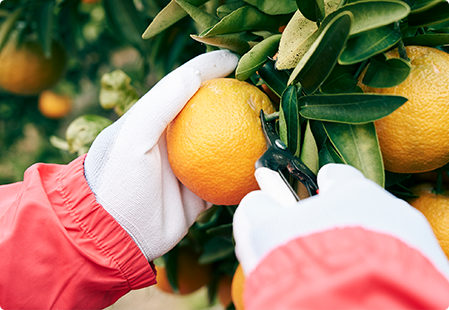
Harvest
December is the best time for harvesting the fruit. After harvest, the fruit are kept in a silo for a fixed period of time to ripen.

In addition to ample sunlight and good drainage, the quality of the soil is another matter of great importance. The soil of Mr. Miyauchi’s fields was so soft and fluffy that our feet sank down into the ground. He told us that this is to help the roots of the trees extend downwards and make for smoother growth for the plant. This picture shows young Iyokan trees which were planted just three years ago. Tiny saplings no thicker than a pencil grew into these big, sturdy trees.
Sweet and Sour Flavors Change with Size.
Miyauchi Iyokans are the sourest when they are small, and the balance from sweetness comes as they grow larger. A large, ripe Miyauchi Iyokan is also a sure sign of delicious flavor.


Ripening in a Silo
Freshly harvested Miyauchi Iyokans are not immediately sent off to market. Instead, they are preserved in a dedicated silo which stays at a constant temperature (around 10 - 12 ℃). The preservation period is about 1 to 3 months depending on the size of the fruit. Allowing the fruit to slowly ripen in this way gives them a deeper tinge of red and makes for a better appearance and flavor.
The Balance of Cultivation and Preservation is the Key to Delicious Flavor.
“There is a saying in the world of Iyokan Orange cultivation which goes, â€کHalf on the Tree, Half in the Silo,’†says Mr. Miyauchi. The fruit are slowly ripened in a dedicated silo after being diligently raised on the tree and harvested. It’s plain to see that a sure technique passed down for many years and a lot of effort have led to a uniquely delicious flavor.
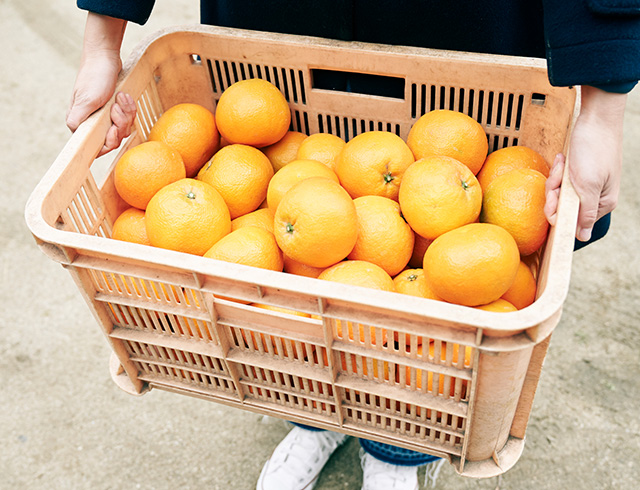
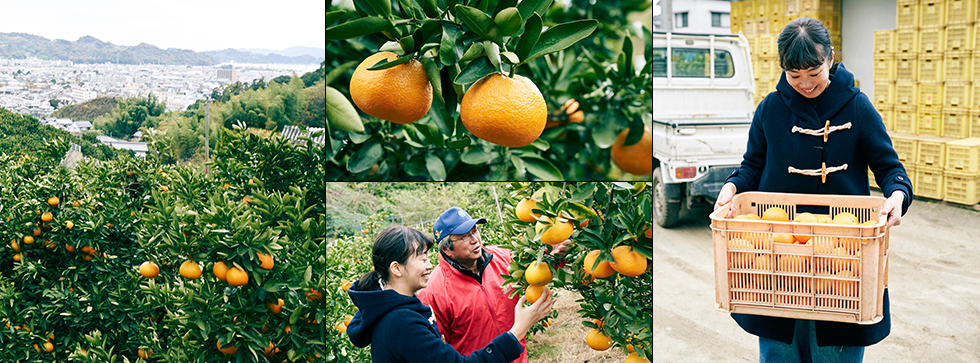


The flavors of the Iyokan fruit, raised with meticulous time and effort, are exceptional! The fruit’s refreshing scent is soothing to the senses as well.
This incredibly juicy fruit will have you coming back for more. I’m curious about desserts and juices made with Iyokan fruit as well.














